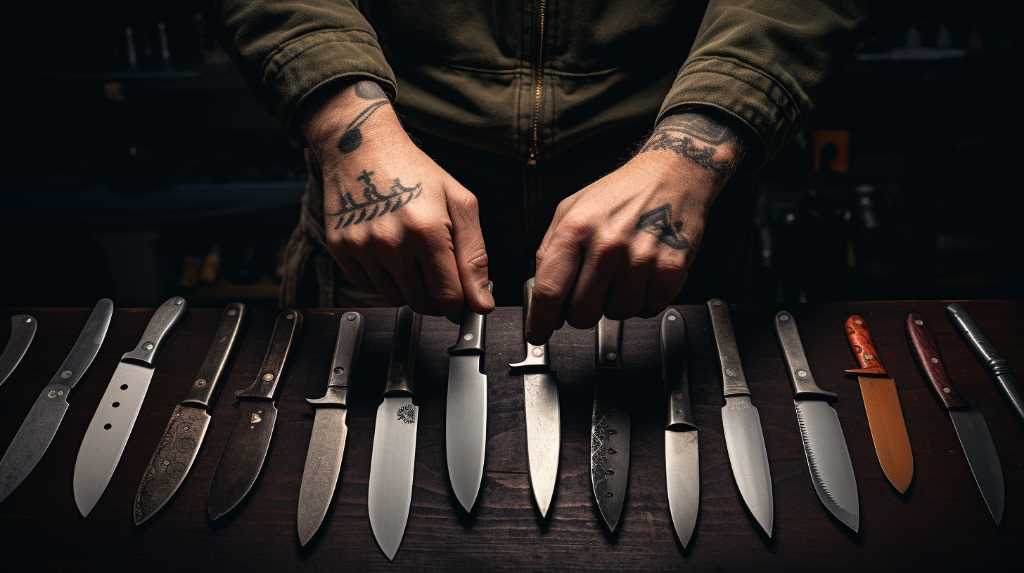
In the realm of tactical weaponry, the art of throwing knives demands both precision and finesse. Whether you are a seasoned professional or a novice enthusiast, mastering the selection and maintenance of throwing knives is essential for achieving optimal performance.
This article presents a comprehensive guide, offering the top 10 tips for selecting the perfect throwing knife while providing insights into proper maintenance techniques.
Prepare to unlock the potential of your throwing skills and embrace the liberation that comes with honing your craft.
Key Takeaways
- Choose a throwing knife with a blade specifically designed for throwing purposes.
- Select a knife with a straight edge for better sticking to the target.
- Consider the handle's comfort and grip when selecting a throwing knife.
- Properly sharpen your throwing knife using the appropriate techniques and tools.
Choosing the Right Throwing Knife
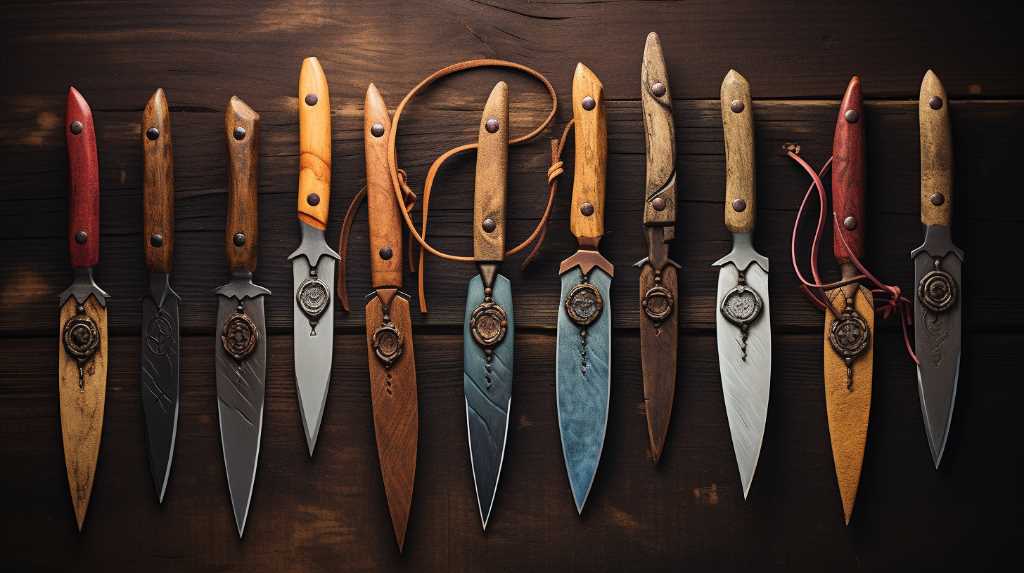
The article provides expert advice on choosing the right throwing knife for optimal performance and accuracy.
Selecting the perfect throwing knife requires careful consideration of several factors. Firstly, it is crucial to choose a blade that is specifically designed for throwing purposes. These knives are typically heavier and have a balanced weight distribution, allowing for better control and accuracy. Additionally, the blade material should be durable and resistant to corrosion, ensuring longevity and reliability.
It is recommended to opt for a knife with a straight edge, as it provides a better chance of sticking to the target. Furthermore, the handle should be comfortable and have a good grip to prevent slippage during throwing.
Lastly, considering the length and weight of the knife is essential to suit individual preferences and throwing style. By following these guidelines, one can choose a throwing knife that guarantees optimal performance and accuracy, enhancing the overall throwing experience.
Understanding Knife Balance and Weight
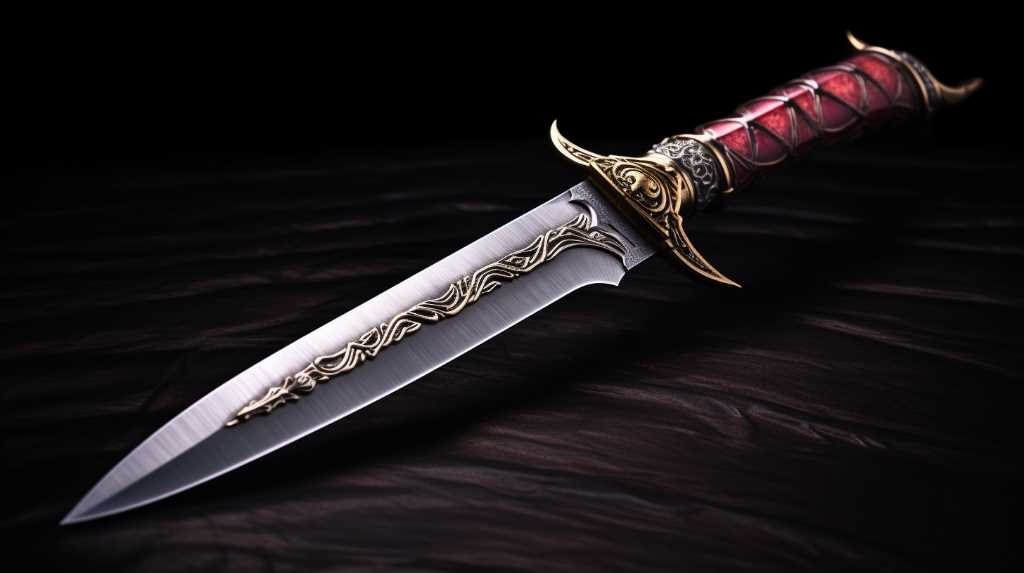
To achieve optimal performance and accuracy when throwing knives, it is essential to understand the intricate relationship between knife balance and weight, as well as how they work together to improve throwing technique.
Knife balance refers to the distribution of weight along the blade and handle, while weight determines the overall heaviness of the knife. A well-balanced knife ensures a smooth rotation in flight and enhances accuracy, while the weight impacts the knife's speed and stability during the throw.
It is important to find the right balance and weight that suits your throwing style and preferences. Experimenting with different knives, grip techniques, and throwing distances can help you understand how balance and weight affect your throws.
Considering Blade Material and Design
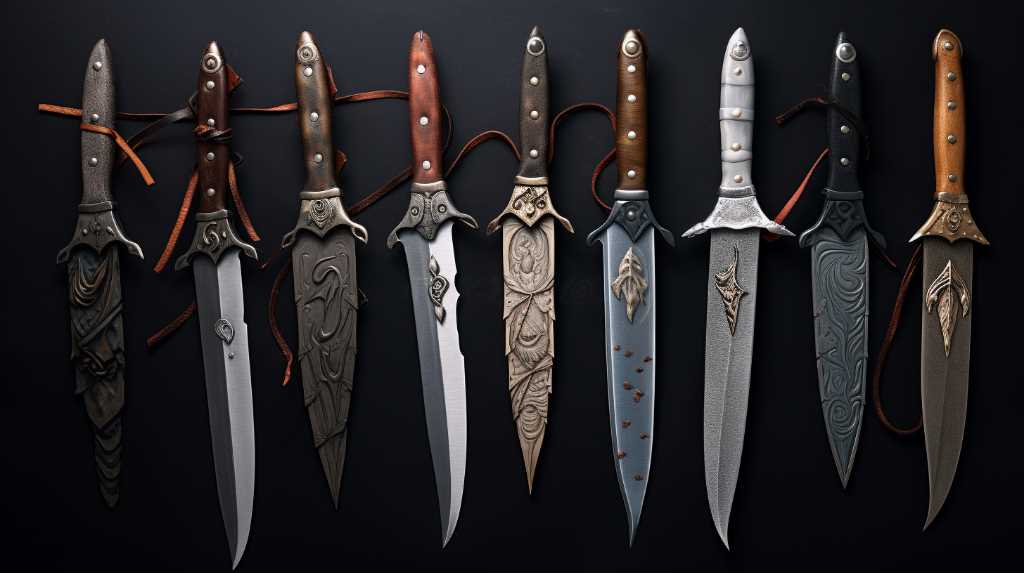
Considering blade material and design can greatly impact the performance and durability of a throwing knife, so it is crucial to select a material and design that best suits your throwing needs. When choosing a throwing knife, keep in mind the following tips:
- Material: Opt for high-quality stainless steel or carbon steel blades, as they offer excellent durability and corrosion resistance.
- Design: Look for a balanced blade design with a sharp point and a sturdy, full tang construction for optimal throwing accuracy and power.
- Weight Distribution: Ensure the knife has a well-balanced weight distribution, with the center of gravity located towards the front of the blade.
- Handle: Choose a handle that offers a secure grip and is comfortable to hold, such as one made of durable materials like hardwood or synthetic polymers.
Grip and Handle Selection
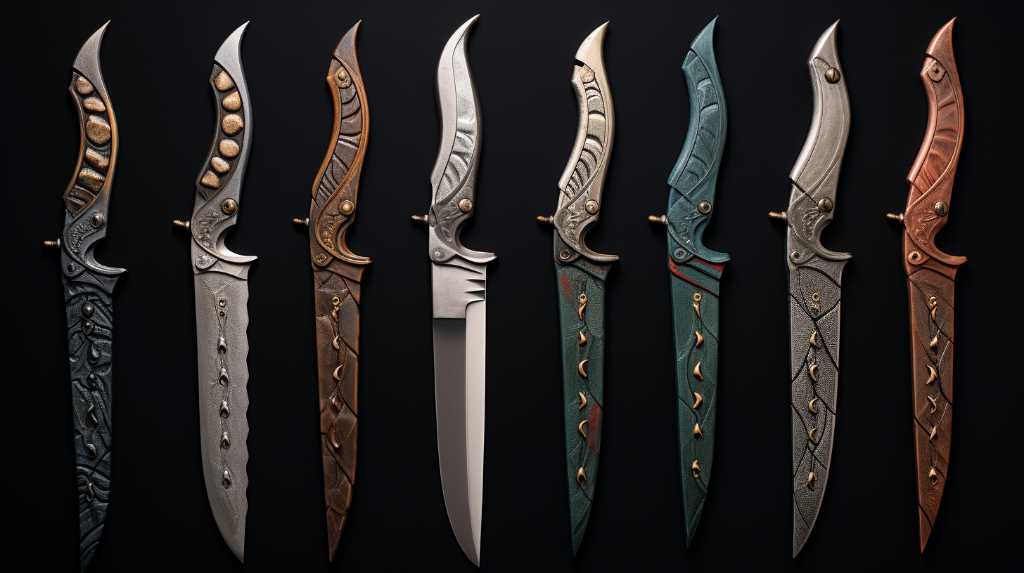
A key aspect in selecting a throwing knife is finding a handle that provides a sufficient grip and comfortable hold for optimal throwing performance. The grip of a throwing knife is crucial, as it directly affects accuracy and control during the throw. When choosing a handle, it is important to consider the material, texture, and shape.
Many throwing knives have handles made of materials like rubber, paracord, or micarta, which offer a secure grip even in wet or sweaty conditions. The handle should also fit comfortably in the hand, allowing for a natural and firm hold. Additionally, the shape of the handle should promote a balanced weight distribution, ensuring a smooth and consistent release.
Proper Knife Sharpening Techniques
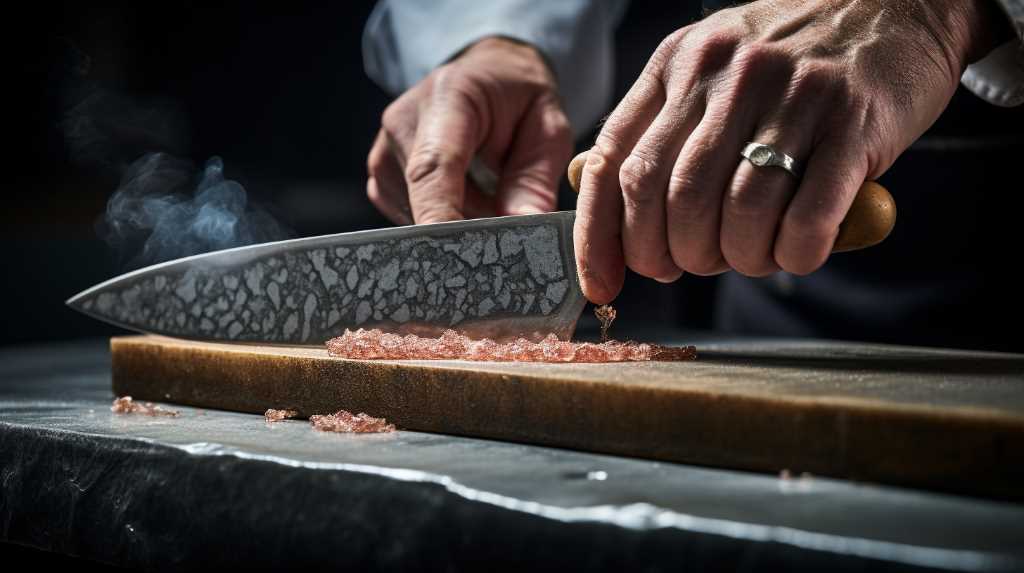
Moreover, it is vital to master proper knife sharpening techniques in order to maintain the sharpness and longevity of throwing knives. Properly sharpened throwing knives not only enhance accuracy but also ensure safety during use.
To assist you in this endeavor, here are some essential tips to consider:
- Use a high-quality sharpening stone or diamond sharpening tool.
- Maintain a consistent sharpening angle, typically between 20 and 25 degrees.
- Start with a coarse grit and gradually move to finer grits for a polished edge.
- Always follow the manufacturer's recommendations for sharpening your specific throwing knife model.
Balancing Throwing Knife and Target Distance

Finding the right balance between throwing knife weight and target distance is crucial for achieving precise and accurate throws.
When considering the weight of a throwing knife, it is important to strike a balance between too heavy and too light. A knife that is too heavy may be difficult to control and may not travel the desired distance, while a knife that is too light may lack the necessary force to penetrate the target.
Similarly, the distance between the thrower and the target should be carefully considered. If the distance is too short, the knife may not have enough time to rotate and stabilize before reaching the target. On the other hand, if the distance is too long, the knife may lose momentum and accuracy.
Achieving the right balance between knife weight and target distance requires practice, experimentation, and a deep understanding of the principles of knife throwing.
Throwing Knife Stances and Techniques

One must master various throwing knife stances and techniques in order to achieve precision and accuracy during throws. The art of throwing knives requires a deep understanding of body mechanics and a keen sense of timing.
Here are four key stances and techniques that can help aspiring knife throwers improve their skills:
- The Hammer Grip: This grip involves holding the knife handle firmly with all fingers wrapped around it, similar to holding a hammer. It provides stability and control during the throw.
- The Line of Sight Technique: This technique involves aligning the knife thrower's dominant eye with the target to ensure accurate aim and trajectory.
- The Quarter Turn Stance: This stance involves standing perpendicular to the target, with the thrower's throwing arm extended straight out. It allows for maximum power and control in the throw.
- The Follow-Through: A proper follow-through involves maintaining the throwing arm's extension after release, allowing for a smooth and accurate throw.
Mastering these stances and techniques will enable knife throwers to achieve greater precision and accuracy, leading to a more successful and satisfying throwing experience.
Maintaining Knife Edge and Tip
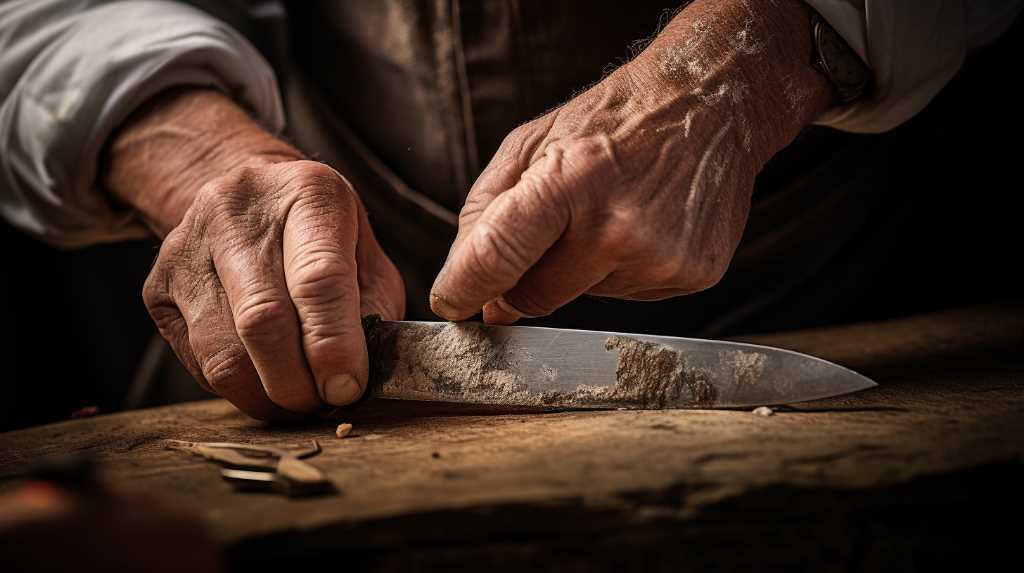
Regularly sharpening and carefully handling the knife blade is essential for maintaining the sharpness and integrity of both the knife edge and tip.
The knife edge is the primary contact point between the blade and the target, and any dullness or damage can significantly impact its performance. To maintain the knife edge, it is important to use a high-quality sharpening stone and follow the manufacturer's guidelines.
Additionally, proper handling of the knife blade is crucial to prevent accidents and preserve its sharpness. Always hold the knife by the handle and avoid using excessive force or twisting motions that can cause the blade to bend or chip.
Cleaning and Rust Prevention

Thoroughly cleaning and diligently applying rust prevention techniques are integral to maintaining the longevity and performance of throwing knives. To help you in this endeavor, here are a few expert tips:
- Regularly clean your throwing knives with a mild soap and warm water solution.
- Dry them thoroughly after cleaning to prevent moisture buildup.
- Apply a thin layer of oil or lubricant to protect against rust and corrosion.
- Store your throwing knives in a dry and cool place to minimize exposure to humidity.
By following these maintenance practices, you can ensure that your throwing knives remain in optimal condition for longer periods.
Regular cleaning and rust prevention not only extend the lifespan of your knives but also enhance their performance and accuracy. So, take the time to care for your throwing knives, and they will continue to serve you well in your liberating pursuit of precision and skill.
Storage and Transport Tips
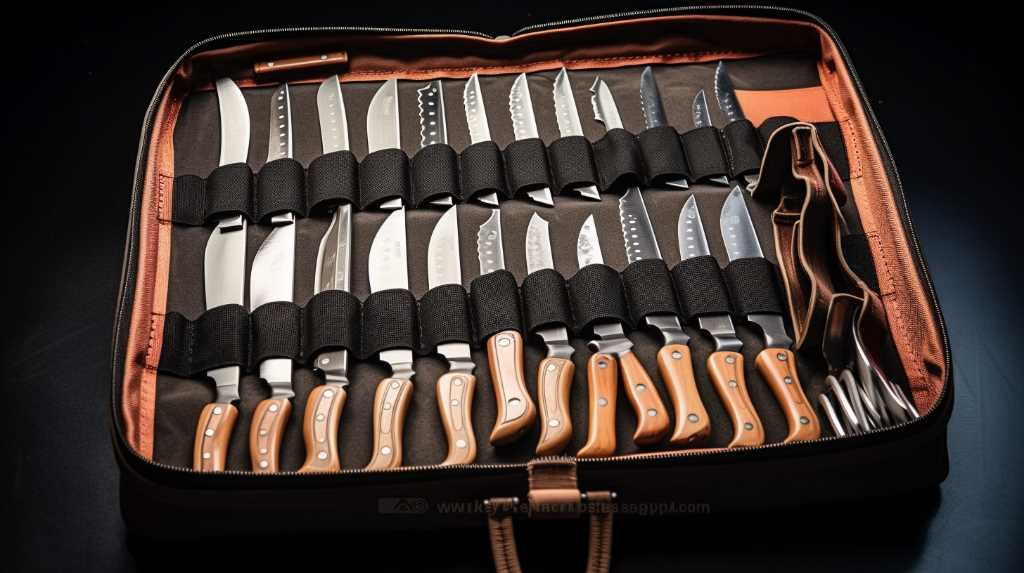
To ensure the safe and secure storage and transport of your throwing knives, it is essential to choose a durable carrying case and regularly inspect the locks and hinges for any signs of wear or damage.
A high-quality carrying case will not only protect your knives from external elements but also prevent accidental injuries during transportation. Look for a case made from sturdy materials such as hard plastic or aluminum, with reinforced corners and reliable locking mechanisms.
Inspecting the locks and hinges regularly will help identify any potential issues before they become a safety hazard. Liberating yourself from worries about the security of your throwing knives starts with investing in a durable carrying case and maintaining it properly.
With the right storage and transport system in place, you can enjoy your throwing knives with peace of mind.
Frequently Asked Questions
Can Throwing Knives Be Used for Self-Defense?
Throwing knives can be used for self-defense due to their versatility, long-range capabilities, and ability to incapacitate an attacker. However, proper training is necessary to ensure effective and safe use in a self-defense situation.
Are Throwing Knives Legal to Carry in Public?
Throwing knives can have legal restrictions on carrying them in public, varying by jurisdiction. It is important to research and understand the laws in your area to ensure compliance and avoid any legal consequences.
Can Throwing Knives Be Used for Hunting?
Throwing knives can be used for hunting, but it is important to choose the right knife for the task. Consider factors such as blade design, weight, and balance to ensure accuracy and effectiveness in the field. Regular maintenance is also crucial for optimal performance.
How Do I Know if a Throwing Knife Is Suitable for My Hand Size?
When determining if a throwing knife is suitable for your hand size, it is important to consider its weight, handle length, and grip comfort. These factors directly impact the knife's balance and your throwing accuracy.
Are There Any Specific Regulations for Throwing Knives in Different States or Countries?
Specific regulations for throwing knives in different states or countries vary. It is important to research and adhere to local laws and restrictions to ensure compliance and avoid legal consequences.
Conclusion
In conclusion, selecting the right throwing knife is crucial for achieving accuracy and efficiency in throwing. Understanding the balance, weight, blade material, and grip is essential for making an informed choice.
Proper maintenance, including sharpening techniques, cleaning, rust prevention, and storage, ensures the longevity of the knife.
For example, a professional knife thrower, John, improved his throwing skills by selecting a well-balanced knife and regularly maintaining its edge, resulting in consistent bullseye hits in competitions.

